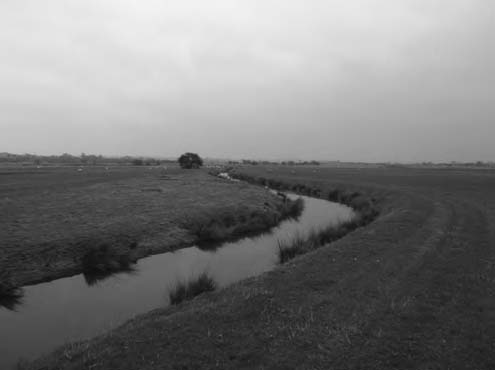|
The aquatic snail Lymnaea fusca (Pfeiffer 1821) was first recognised as a species distinct from L. palustris in Britain by Carr and Killeen (2003), though its identity had been established in central Europe almost half a century earlier (Jackiewicz, 1959). L. palustris was considered to be widespread in the British Isles and Ireland by Kerney (1999), typically occurring in ditches choked with vegetation. This concept prevailed prior to the separation of the two taxa, recent investigations having revealed that L. fusca is by far the more widely distributed species, with L. palustris occurring mostly to the east of mainland Britain and not so far recorded from Ireland (Anderson, 2005). Since the separation of the two British species, provision of additional distributional data for either species has attracted little interest from recorders. Recently published records often still refer to “L. palustris agg”, the few specimens supplied for anatomical examination have being mainly submitted by non-malacologists. During preparation of the 2003 paper, specimens from a number of Kent locations had been examined, though true palustris had not been encountered within the county. Subsequent visits to the Romney Marsh area of Kent and East Sussex undertaken during May 2005 did however detect an abundant population of the species thriving in a permanent, macrophyte-rich drain on grazing marsh known as the Dowels at map reference TQ 969300 (Plate1). Additional specimens were also obtained from two smaller, adjacent ditches. The species prevails in the East Anglian fens, where it similarly occurs in permanent drains on grazing marsh containing a rich macrophyte flora including Water Soldier Stratiotes aloides L., though occasionally also in temporary shallow ditches supporting only Common Reed Phragmites communis Trin. On the basis of the available information, L. palustris may well be a useful indicator species for the assessment of good quality aquatic environments, whereas L. fusca appears tolerant of agricultural pollution. The community based classification scheme introduced by Chadd and Extence (2004) designates a conservation score of 2 to “Lymnaea palustris”, though this classification obviously relates to the previous concept of a single, widespread species. A revised score of 5 would thus seem more appropriate for true palustris, with a score of 2 being retained for fusca (Chadd, personal communication). There has been some contention by continental authors (eg Falkner et al., 2001) that a third related taxon, L. corva (Gmelin) occurs in the British Isles. This assumption has been based on examination of shells contained within the collection of the Natural History Museum, Kensington, but has not been verified by dissection. Shells from a number of locations including Maidenhead, Suffolk and Wicken Fen labelled “L. palustris var. corvus” present within the museum collection can be attributed to either palustris or fusca on the basis of shell size and general morphology. More convincing is a series of larger shells collected by L E Adams in 1881 from Coggeshall, Essex, which are contained within the collection of F W Taylor. An account of their discovery is provided by Adams in The Collectors Manual of Land and Freshwater Shells: “I came across a pond in Essex full of nothing but the variety corva, some of which measured an inch in altitude”. The shells indeed resemble those of corva that are to be found within permanent ditches in the Netherlands, though until locally collected specimens can be obtained for anatomical verification, the extant status of the species in Britain remains uncertain. Large specimens of the palustris complex may well repay dissection, particularly those collected from eastern England. ReferencesAnderson R. 2005. An Annotated List of the Non-Marine Mollusca of Britain and Ireland Journal of Conchology 38 No 6: 607-637. Carr R. and Killeen I. J. 2003. The Cryptic Occurrence of Stagnicola fuscus (GASTROPODA: LYMNAEIDAE) in the British Isles Journal of Conchology 3 No.1: 67-71. Chadd R. and Extence C. 2004. The conservation of freshwater macroinvertebrate populations: a community based classification scheme Aquatic Conservation Marine and Freshwater Ecosystems 14: 597-624. Falkner G., Bank R.A. & Von Proschwitz T. 2001. Checklist of the nonmarine Molluscan Species-group taxa of the States of Northern, Atlantic and Central Europe (CLECOM 1) Heldia 4: 1-76. Jackiewicz M. 1959. Badania nad Zmiennoscia I Stanowskiem systematycznym Galba palustris O. F. Müll. Pozna_skie Towarzystwo Pryzykaciól Nauk Wydzial Matematyczno- Przyrodniczy Prace Komisji Biologicznej 19 (3) 89-187. Kerney M.P. 1999. Atlas of the Land and Freshwater Molluscs of Britain and Ireland Harley Books, Chichester. 261 pp. Taylor, F.W. 1896. The Collectors Manual of Land and Freshwater Shells Taylor Bros, Leeds. 209 pp ix plates. |
 |
A Note on the Currently Known Status of the Lymnaea palustris (Müller, 1774) Complex in Britain and Ireland
Issue
16
Page
24
Species
